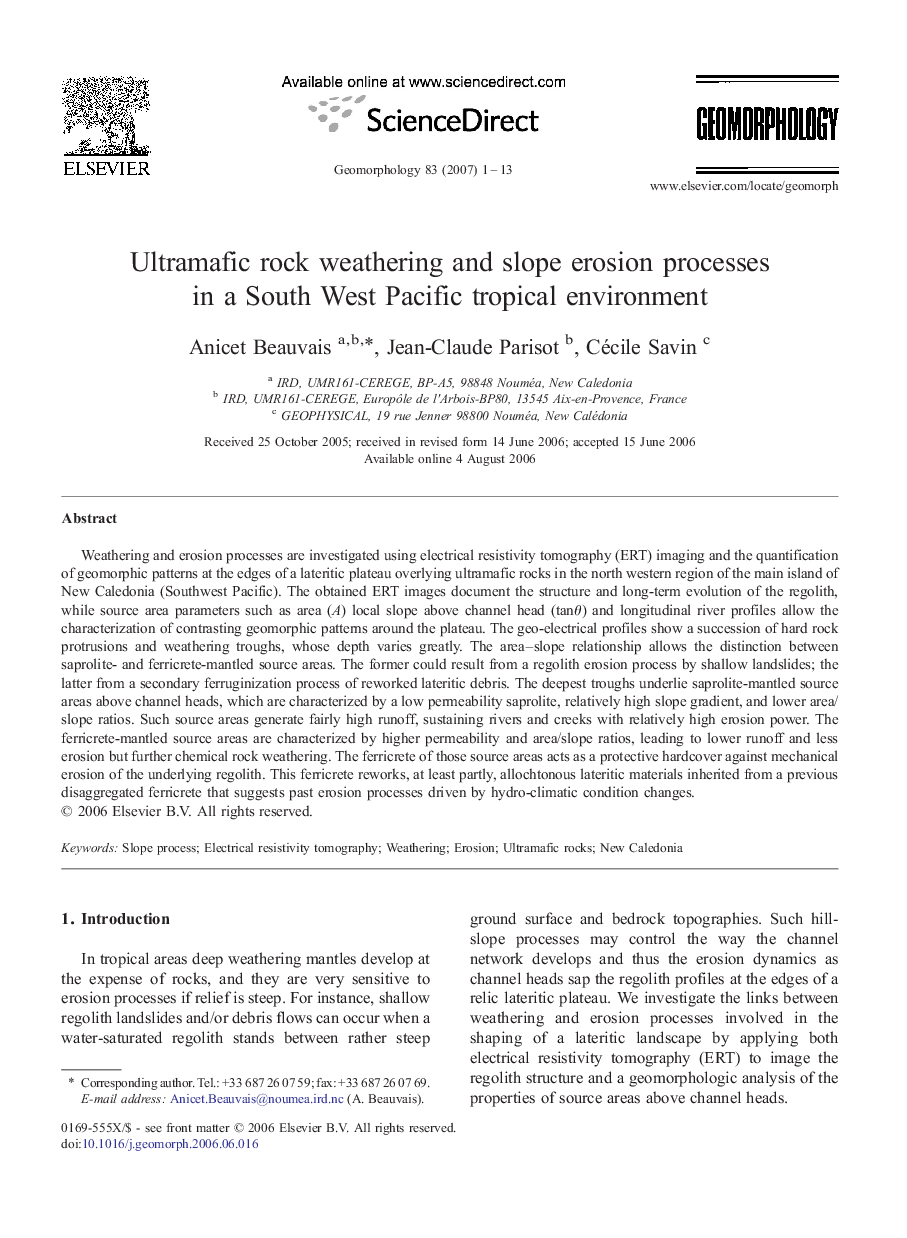| Article ID | Journal | Published Year | Pages | File Type |
|---|---|---|---|---|
| 4687389 | Geomorphology | 2007 | 13 Pages |
Weathering and erosion processes are investigated using electrical resistivity tomography (ERT) imaging and the quantification of geomorphic patterns at the edges of a lateritic plateau overlying ultramafic rocks in the north western region of the main island of New Caledonia (Southwest Pacific). The obtained ERT images document the structure and long-term evolution of the regolith, while source area parameters such as area (A) local slope above channel head (tanθ) and longitudinal river profiles allow the characterization of contrasting geomorphic patterns around the plateau. The geo-electrical profiles show a succession of hard rock protrusions and weathering troughs, whose depth varies greatly. The area–slope relationship allows the distinction between saprolite- and ferricrete-mantled source areas. The former could result from a regolith erosion process by shallow landslides; the latter from a secondary ferruginization process of reworked lateritic debris. The deepest troughs underlie saprolite-mantled source areas above channel heads, which are characterized by a low permeability saprolite, relatively high slope gradient, and lower area/slope ratios. Such source areas generate fairly high runoff, sustaining rivers and creeks with relatively high erosion power. The ferricrete-mantled source areas are characterized by higher permeability and area/slope ratios, leading to lower runoff and less erosion but further chemical rock weathering. The ferricrete of those source areas acts as a protective hardcover against mechanical erosion of the underlying regolith. This ferricrete reworks, at least partly, allochtonous lateritic materials inherited from a previous disaggregated ferricrete that suggests past erosion processes driven by hydro-climatic condition changes.
